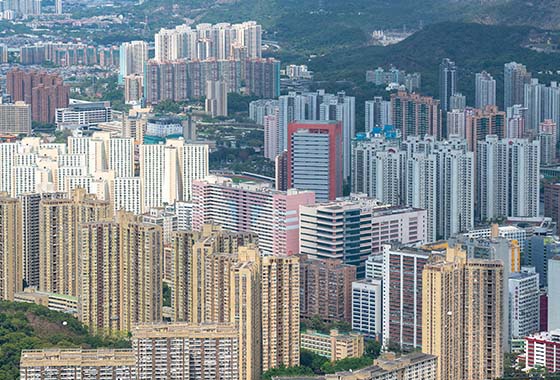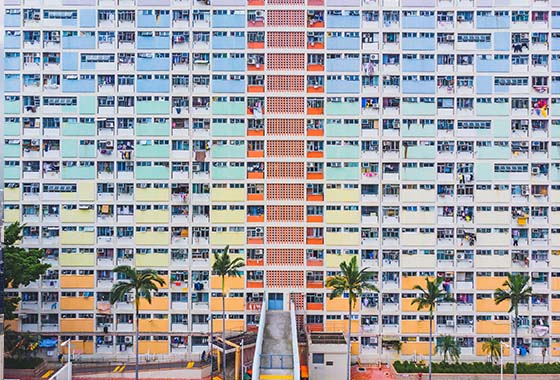Hong Kong Housing Landscape Navigator 2024
Our Hong Kong Foundation
Hong Kong Housing Landscape Navigator 2024
(2 May 2024, Hong Kong) Our Hong Kong Foundation (OHKF) released its Hong Kong Housing Landscape Navigator report, which outlines the latest exclusive forecast of private and public housing supply. Through the efforts of successive Administrations, Hong Kong is entering a “harvest phase” in its land and housing supply. In the next five years, annual private and public housing completions will reach 19,100 units and 35,000 units respectively, exceeding the Long Term Housing Strategy (LTHS) target, while a continued reduction in the Composite Waiting Time for Subsidised Rental Housing (CWT) is also expected. As the housing supply outlook continues to improve, the policy focus should shift from enhancing quantity to enhancing quality, and gradually increase the size of public housing units and the proportion of subsidised sale flats within public housing.
Private Housing Supply: Stabilising After Initial Fluctuations with Increased Contributions from Private Land Bank
Private housing completions in the next five years will tail off after initial highs. Annual completions for 2024 to 2028 will reach around 19,100 units, but it will be skewed towards the first two years with over 20,000 units each, then tailing off to reach around 15,000 to 17,000 units annually. This is due to developers adjusting their construction progress in response to the market conditions, coupled with construction delays stemming from the multiple instances of extreme weather conditions in 2023.
In terms of land supply, 2023 saw a record of six failed land tenders in government-controlled land supply. However, the impact was partly offset as the development potential of private land bank was released. Its proportion among the total land supply increased from 25% between financial years 2018/19 and 2020/21 to 67% between financial years 2021/22 and 2023/24.
As land creation enters a “harvest phase”, the Government has a more abundant land reserve and hence greater flexibility to adjust the quantity and pace of land supply. Subject to the disposal success rate for government-controlled land supply, and the pace of taking forward private-initiated projects, average annual completions for 2029 to 2033 are expected to be between 14,400 and 18,500 units. The overall trend will remain stable in the next ten years.
Public Housing Supply: Continued Vigilance Despite Progress in Removing Risk Factors and Exceeding Targets
Regarding public housing, it is expected that some 35,000 units will be completed annually between 2024/25 and 2028/29, exceeding the 30,800-unit LTHS target. In particular, major risk factors affecting short-to-medium term supply have been removed for now, including a significant reduction in the percentage of delayed public housing completions to 2% in 2023/24, and completion of the 30,000 Light Public Housing units is also progressing to plan.
Based on the latest completion forecasts, our estimates show that the CWT is on track to be reduced to 4.5 years by 2026/27, thereby meeting the Government’s target. Nevertheless, we should not rest on our laurels. If the past recurring construction delays reoccur, the CWT will only be reduced slightly to 5.2 years.
If all listed public housing sites can be handed over on time and experience no construction delays, it is expected that completions in the next ten years can reach some 410,000 units, which exceeds the LTHS target by 33%. Even under the scenario where site delivery and construction are delayed, the resulting completions will still exceed the LTHS target by 10%.
Beyond Enhancing Quantity: The Time is Ripe for Change in Housing Structure to Promote Social Mobility
Our analysis showed that Hong Kong’s housing supply for the past two decades has seen an M-shaped pattern, with subsidised sale flats (SSFs) accounting for only about 15% of the total housing stock. Yet, nearly 38% of Hong Kong households are eligible for SSFs based on their respective income, which highlights the undersupply of SSFs. This is reflected in each sale exercise of the Green Form Subsidised Home Ownership Scheme (GSH) and Home Ownership Scheme (HOS), where it is always heavily oversubscribed.
Therefore, we propose to increase the supply of GSH in the short-to-medium term. This will create more affordable homeownership opportunities without adversely affecting the waiting time for public rental housing (PRH). On the premise of increased GSH supply, the Government can consider adjusting the quota allocation ratio between Green Form and White Form applicants for newly completed HOS units in favour of the latter. In the medium-to-long term, the Government should increase the ratio of HOS within public housing to further enhance the housing ladder and promote upward social mobility.
Past GSH sale exercises have shown that small units are unpopular, with units of less than 300 square feet accounting for the majority of unsold units and cases of forfeitures. To provide more incentives for existing PRH tenants to achieve homeownership and surrender their PRH units, the Government should increase the size of newly completed SSFs, including the GSH and HOS, so as to improve the living quality of public housing residents.
OHKF President Dr Jane Lee said: “Hong Kong is at a crossroads once again. On the last occasion, we halted all land creation and slowed housing construction efforts for ten years, causing supply shortages and a decline in living quality, with repercussions that we are still grappling with and rectifying today. This was a stark reminder for us to be more forward-looking with our land and housing strategies, and avoid creating future problems while solving our current ones. Learning from this experience, not only should we continue with land creation and housing construction under a systematic approach that would make the most of limited resources, but we also have to grasp the window of opportunity in enhancing quality.”
OHKF Vice President cum Co-Head of Research Mr Ryan Ip remarked: “Having laid solid foundations in enhancing quantity, the time is ripe to transform better living quality from a long-term aspiration to reality. More specifically, we call for an increase in affordable homeownership opportunities and per capita living space in the public housing sector. Nevertheless, any changes need to strike a balance between the pursuit of shortening the PRH waiting time, while providing adequate incentives for existing PRH tenants to achieve homeownership and surrender their PRH units. We, therefore, outlined a gradual three-step approach to enhancing quality over the next decade that will avoid adversely affecting PRH waiting time, enhance the SSF supply structure, and promote upward social mobility.”
Hong Kong Housing Landscape Navigator 2024:
Full Report: https://bit.ly/3y2RZnP
Executive Summary: https://bit.ly/3y1AwvR







